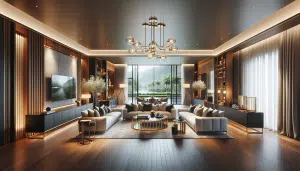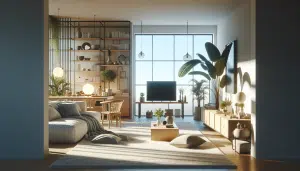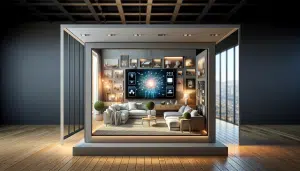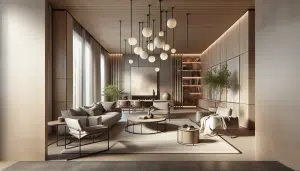Minimalism Secrets You Haven’t Tried in Home Decor
Lily Carter October 14, 2025
Discover the untapped secrets of minimalist home decor that transform living spaces into personal havens. Explore practical, curiosity-driven insights on decluttering, creating serenity, and finding true comfort through simplicity for every lifestyle.
The Essence of Minimalism in Today’s Homes
Minimalism isn’t just a style. It’s a mindful approach that challenges conventional beliefs about space and possessions. Instead of filling every surface or shelf, this philosophy embraces open areas, neutral tones, and a strong focus on functionality. With people spending more time at home, the appeal of minimalistic design grows each day. Minimalist home decor goes beyond mere trends; it invites individuals to reimagine their surroundings in a way that fosters calm, clarity, and joy. This design movement strips away excess, spotlighting what truly matters in a room. It’s about making intentional choices and cultivating an atmosphere that feels peaceful and uncluttered.
Many are surprised by how much impact small changes have. Removing non-essentials, choosing multi-functional furniture, and using a limited color palette are foundational steps towards a minimalist lifestyle. Living rooms, bedrooms, and even kitchens can exude tranquility and efficiency when every item serves a purpose. The beauty of this approach is that anyone can start, regardless of their current decor or home size. Simple acts, such as clearing countertops or storing away unused items, create a noticeable transformation. Calmness follows naturally as visual noise diminishes, and rooms start to feel more spacious and welcoming.
The core of minimalist home decor lies in the balance between utility and beauty. Furniture is selected for its elegance and simplicity, and every space is curated with a discerning eye. This doesn’t mean sacrificing comfort—cushioned seating, soft lighting, and touches of greenery bring subtle warmth without causing clutter. In a world overflowing with options, minimalism encourages people to connect with their environment intentionally. As more households shift toward this lifestyle, the traditional understanding of luxury is redefined as serenity, not extravagance. The effects are lasting and deeply satisfying.
Curating Spaces Through Decluttering Techniques
Decluttering has become a buzzword, but its connection to minimalism is both practical and profound. The process isn’t a one-time event; it’s a practice of consistent editing. Keeping surfaces clear of unnecessary objects allows the eyes—and mind—to relax. Many find success by tackling one small area at a time, such as a single drawer or coffee table. Sorting possessions into categories—keep, donate, recycle—adds structure to the otherwise intimidating task of paring down. This simple system helps sustain motivation and avoid feeling overwhelmed. Minimalism’s focus on decluttering empowers residents to identify and prioritize what brings genuine utility or joy, rather than holding onto items out of habit.
Several approaches can make the decluttering journey less daunting and more rewarding. The “one in, one out” rule, for instance, sets a mindful boundary: for each new item brought into the home, an old one must be let go. Visualizing the end result—a restful, streamlined space—can spark momentum and sustain effort. Experts recommend starting with visible, high-use spaces. As confidence grows, deeper storage areas receive focused attention. Decluttering isn’t about self-denial, but liberation from excess. Many households report a sense of freedom and increased satisfaction after clearing out what’s no longer needed or loved.
Creating a minimalist home doesn’t mean living starkly or with bare walls. Instead, it’s about ensuring every piece has meaning or function. Framed memories, beloved books, and practical accessories can all be retained if curated with care. Minimalist decor values quality over quantity, encouraging individuals to invest in items that serve dual purposes or meaningful roles. This intentional curation of possessions fosters contentment and allows for greater appreciation of each piece. Practicing these decluttering strategies regularly helps maintain a harmonious environment, fueling the minimalist transformation and supporting mental well-being. Scientific studies now link orderly homes to less stress and higher life satisfaction (https://www.apa.org/news/press/releases/2019/06/decluttering).
Selecting Materials and Colors for a Calmer Space
Color and material choices are essential for a soothing minimalist home, and the decisions you make can have dramatic effects on mood and atmosphere. Soft neutrals—like beige, gray, taupe, and crisp white—form the cornerstone of a peaceful palette. These shades gently reflect natural light, making rooms feel larger and more open. When people walk into a minimalist space, they often notice an immediate sense of calm. This deliberate restraint in color and material choices removes distractions, helping the mind settle. Texture, too, plays a supporting role. Natural fibers such as woven cotton, linen, and wool add comfort without visual clutter, making the home more inviting.
For floors and surfaces, many prefer lighter woods, stone, or polished concrete. These materials are easy to maintain, long-lasting, and visually unassuming. Small accents in muted metallics or glass can provide interest without overpowering the design. Even small additions—a single wooden stool, a pale rug, or textured throw pillows—infuse warmth and depth into a minimalist room. Minimalism’s approach asks: How will this piece affect the balance of the space? Keeping primary surfaces free of heavy colors or intricate patterns means the few chosen items receive more attention and appreciation.
Beyond aesthetics, minimalism’s color and material philosophy also serves a practical purpose. Durable, washable fabrics and easy-to-clean surfaces reduce maintenance time. Families, singles, and older adults alike value these benefits. A space that’s easy to keep tidy is more likely to stay clutter-free. For those sensitive to environmental issues, choosing sustainable, natural materials offers additional peace of mind. Many interior design guides highlight that a minimalist color scheme supports relaxation and focus for everyone using the home (https://www.nytimes.com/guides/realestate/home-decor-ideas). It’s an approach that combines beauty with genuine functionality.
The Role of Lighting in Minimalist Decor
Lighting can transform the feeling of a minimalist space, making it feel bigger, brighter, or cozier. Natural sunlight, whenever possible, should be maximized. Large windows, sheer curtains, and reflective surfaces help bounce daylight around a room. In homes where natural light is scarce, clever use of artificial lighting becomes essential. Floor lamps, wall sconces, and concealed fixtures provide even illumination without drawing attention to themselves. The result: a tranquil environment where shadows are softened and details pop. When lighting is understated yet effective, it complements the simplicity that defines minimalist home decor.
Layered lighting is a secret weapon in the minimalist toolkit. Using different sources, such as a mixture of overhead and task lights, allows residents to tailor the ambiance to their activity. Warmer color temperatures evoke relaxation in bedrooms and living rooms, while cooler tones support focus in offices or kitchens. Dimmable lights, another minimalist favorite, add versatility for mood adjustment without adding visual clutter. Experts in home design suggest choosing minimalist lighting fixtures—think slimline pendants or recessed lighting—to preserve clean sight lines and the airy feeling that minimalism seeks to achieve.
Smart lighting technology continues to advance minimalism’s reach. Remotely controlled bulbs and sensors mean fewer switches, fixtures, and physical interruptions in a space. This not only maintains the uncluttered appearance but also offers energy efficiency. For many, integrating smart systems adds convenience and a sense of innovation to home living. Importantly, lighting should guide attention to the best features of the room—an attractive chair, a plant, or a textured wall. By using intentional, harmonious lighting strategies, minimalist spaces can shift their mood from energizing to soothing throughout the day (https://www.energystar.gov/products/lighting_fans).
Personalizing Minimalist Design Without the Clutter
Minimalism doesn’t mean personality-free spaces. Individual flair can still shine, but with mindful restraint. Art, photography, and beloved books become statement pieces in otherwise serene rooms. Displaying collections sparingly ensures that each item stands out. A single large painting, for instance, often has more visual impact in a minimalist setting than a gallery wall. Personal touches matter—they tell the story of the home’s residents and express a unique point of view. The minimalist secret: edit, don’t erase. Choose items that truly resonate, and rotate them for seasonal change.
Houseplants are another route to personalization. A well-placed monstera or snake plant brings movement and fresh energy into a minimalist room. Planters in natural textures—ceramic, stone, or copper—blend seamlessly into neutral backdrops. With careful curation, a few living elements maintain a clean look while adding health and mood benefits. Research shows that integrating greenery indoors can lower stress and improve air quality (https://www.ncbi.nlm.nih.gov/pmc/articles/PMC4419447/). Minimalist design welcomes these organic details because they offer beauty without clutter.
Textiles play an important part in adding warmth and character. Neutral-toned rugs, throws, and cushions in varying textures provide comfort underfoot and visual interest. By using a consistent palette but different fabrics, a layered look emerges—soft, inviting, but never busy. Even the addition of a handmade object or vintage find can become a cherished focal point. Ultimately, personalization within minimalism requires intention. It’s about curated joy, not accumulation. This blend keeps the home both inspiring and restful.
Minimalism as a Path to Better Wellbeing and Sustainability
Minimalism intersects with trends in sustainability and personal wellbeing. A home that contains only what is needed and appreciated naturally consumes fewer resources. By purchasing less, choosing durable goods, and embracing timeless style, residents reduce waste and lower their environmental footprint. Many minimalists report that their shopping habits shift significantly—they buy less often but choose higher-quality items when they do. Minimalism is a lifestyle change with lasting ripple effects, from daily stress reduction to global conservation efforts (https://www.epa.gov/recycle).
The mental health benefits are also notable. Research links well-organized, clutter-free spaces with better mood, reduced anxiety, and improved focus. Minimalist homes support restorative rest, creativity, and easier daily routines. There is even preliminary evidence that children raised in less cluttered homes may experience fewer distractions and improved learning environments (https://www.childtrends.org/publications/home-environment-and-early-child-development). Minimalist practices offer lifelong wellbeing for individuals and families, enhancing both physical and psychological resilience.
The philosophy extends beyond interiors. Many find minimalism influences work environments, technology use, and leisure habits. Embracing simplicity can free up time and energy for what matters: hobbies, relationships, and community activities. As the minimalist movement continues to gain popularity, its guiding principles touch all aspects of life. The approach fosters sustainable behaviors and mindful choices, supporting broader cultural shifts towards eco-friendly, peaceful living. Minimalism, then, is more than home decor—it’s a lens for intentional living and a catalyst for positive change.
References
1. American Psychological Association. (2019). The Life-Changing Power of Decluttering. Retrieved from https://www.apa.org/news/press/releases/2019/06/decluttering
2. The New York Times. (n.d.). Home Decor Ideas. Retrieved from https://www.nytimes.com/guides/realestate/home-decor-ideas
3. ENERGY STAR. (n.d.). Lighting & Fans. Retrieved from https://www.energystar.gov/products/lighting_fans
4. Bringslimark, T., Hartig, T., Patil, G. (2009). The Psychological Benefits of Indoor Plants: A Critical Review of the Experimental Literature. Retrieved from https://www.ncbi.nlm.nih.gov/pmc/articles/PMC4419447/
5. U.S. Environmental Protection Agency. (n.d.). Recycling Basics. Retrieved from https://www.epa.gov/recycle
6. Child Trends. (n.d.). Home Environment and Early Child Development. Retrieved from https://www.childtrends.org/publications/home-environment-and-early-child-development







